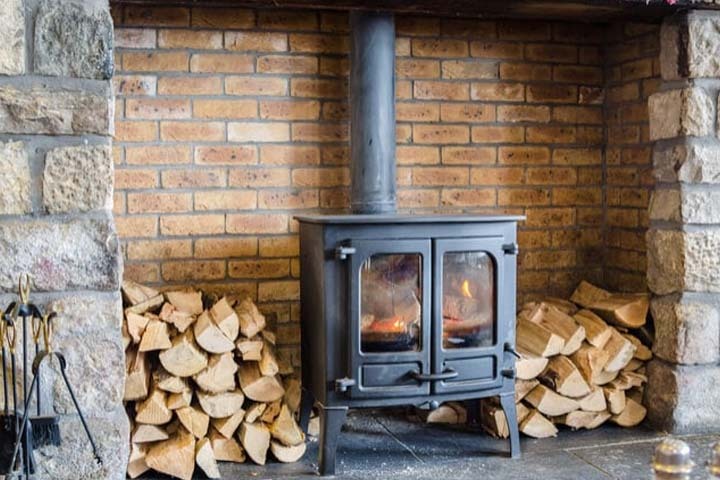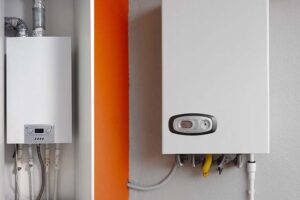Well, since 2005, the law has prevented UK households from installing back boilers due to their impact on the environment and energy poverty challenges in the UK. While back boilers do look aesthetic, you need to replace them with modern condensing boilers.
The best thing is, you can avail of remarkably beneficial grants covering full or partial amounts of the installation. While the guide is about the legal status of back boilers, let’s get back to our original topic.
What is The Legal Status of Back Boilers In the UK?
While there can’t be legal charges against properties which has already been using back boilers for decades, but here is the catch.
Current Laws on Back Boilers
Since 2005, the law has prevented the installation of back boilers in the UK as the government updated Building Regulations to require all new boilers to be at least 92% efficient. As we all know, back boilers simply can’t meet this standard.
Why Were Back Boilers Banned?
Back boilers are one of the most ancient heating systems in the UK. And in this day and time, they simply do not serve the purpose of either energy efficiency or the heating requirements. Here are the exact reasons why they are blocked (they deserved to be, though):
- Back boilers only work at 50-80% efficiency
- They’re harder to inspect and maintain
- They produce more carbon emissions
On the other hand, the modern boilers achieve 92-98% efficiency, which shows a huge difference in both performance and running costs.
What are Your Replacement Options for Back Boilers?
Sometimes changes are inevitable, and in this case, for the good. While the UK is one of the most affected by fuel poverty, sticking to a heating system that drains most of the energy instead of using it for heating is not a wise option.
How Much Does Replacement Cost?
The complete replacement might cost more than you expect. The typical costs of replacing a back boiler cost between £2,900 and £4,500, which includes all the replacement costs, including the controls and heating system itself.
Standard replacement includes:
- Removing or disconnecting your old back boiler (£900-£1,500)
- New combi boiler supply and fitting
- Updated pipes and radiator valves
- System cleaning and flushing
- New heating controls
Different conversion types:
| Work to do | Charges | Duration |
|---|---|---|
| Decommissioning | £2,900-£4,000 | 2 days’ work |
| Complete removal | £3,500-£4,500 | (2-3 days work) |
| Relocating the boiler | Add £600+ | (extra day) |
Why such a range? It depends on your home’s setup, the boiler you choose, and how complex the installation becomes.
Free Replacement Through Government Grants
Did you know you might get your replacement completely free? The government’s ECO4 scheme could cover the entire cost.
Who qualifies for a free upgrade?
Homeowners are tenants struggling to pay the energy costs, have low-energy efficiency heating systems, and can’t afford to upgrade on their own.
- Homeowners or private tenants
- Receiving qualifying benefits or
- Household income under £31,000 per year
- Property has an EPC rating of E, F, or G
- The current boiler is over 20 years old and non-condensing
Qualifying benefits include:
- Universal Credit
- Pension Credit
- Housing Benefit
- Child Tax Credits
- Income Support
The scheme provides grants up to £10,000. That’s enough to cover most back boiler replacements entirely.
The Process Of Back Boiler Replacement
Are you by any chance thinking what actually happens when you replace your back boiler? Let’s walk through the typical process step by step.
Safety and Efficiency Benefits
Now the question is, why should you bother replacing a working back boiler? Well, because the benefits are significant:
Back boilers hide behind fireplaces, which makes it hard to inspect the system. This increases the risk of carbon monoxide leaks going unnoticed.
Modern boilers can slash your energy bills by 20-40%. That could mean saving £300-£630 every year. Over the period of a decade, that’s serious money, man.
Combi boilers don’t need separate water tanks or cylinders. You’ll free up valuable storage space in your home.
What Happens During Installation
The replacement process typically takes 2-3 days. Here’s what your engineer will do:
- Check your current system and heating needs
- Empty your heating system completely
- Safely disconnect your back boiler
- Install new pipes and controls
- Mount and connect your new boiler
- Run safety checks and commission the system
- Provide Building Regulations compliance documents
Making the Right Choice for Your Home
Still unsure whether to replace your back boiler? Let’s look at the key factors that should influence your decision.
When Should You Replace?
Ask yourself these questions:
- Is your boiler over 15 years old?
- Are your energy bills getting higher?
- Do you struggle to find engineers to service it?
- Are replacement parts becoming expensive or hard to find?
If you answered yes to any of these, replacement probably makes sense.
Service Providers and Financing
Major companies like British Gas offer comprehensive replacement services. They typically provide:
- Professional system assessment
- Gas Safe registered installation
- Extended warranties
- 0% APR financing options
- Annual servicing packages
Final Thoughts
Ready to move forward? Start by getting your current system assessed by a Gas Safe engineer. They’ll help you understand your options and whether you qualify for government grants.
Remember, while your back boiler might still work, replacing it could save you money, improve your home’s safety, and give you better heating performance. Sometimes the best time to upgrade is before you absolutely have to.
Frequently Asked Questions
Yes, but it’s getting harder. Fewer engineers work on them, and parts are becoming scarce and expensive. While you can replace them through fully funded government grants, you should take the opportunity and apply.
You can either have it completely removed or decommissioned in place. Decommissioning costs less but leaves the boiler there. Full removal gives you more space but costs more. However, if you get them replaced through grants, you can multiply the cost to zero.
Usually not. Back boiler replacement counts as a like-for-like upgrade. But you’ll need Building Regulations compliance certification before the replacement.
You should expect 2-3 days for most installations. The exact time depends on how complex your system is and whether you need major pipe work changes or are sticking with the current pipework.








